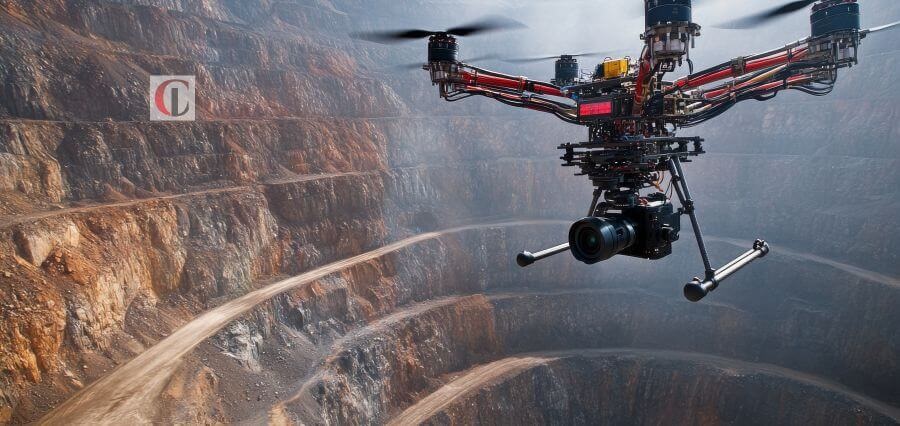The metal industry has played an age-old and essential role in economies throughout the world, providing everything from building materials to electronics materials. Ever so often lately, technology has begun to alter this sector as well, helping to improve efficiency, safety, and environmental sustainability. Among innovations with regard to mining technology are improvements in operations from exploration to extraction and processing.
Automation and Robotics
Automation and robotics have been extensively integrated in the mining sector. Automated machinery is increasingly being used in assignments that were earlier performed by the human workforce. Hauling, drilling, as well as processing materials fall into this category. Precise operations carry lesser chances of errors as automated drills improve overall productivity.
Underground mining also holds robotics as an important part. A robotic vehicle with a few sensors attached can be easily deployed into challenging terrains for work in areas that are dangerous for human workers. Not only does this enable continuous operation, but even these machines may do the work without having to take breaks and shifts.
Data Analytics and Artificial Intelligence
Data analytics and artificial intelligence in the metal industry have revolutionized decision-making. High algorithms can process large geology data sets and identify potential mining sites more accurately than traditional means, saving time and costs involved during exploration.
AI also increases the efficiency of operating mines. Predictive maintenance systems scan the performance of equipment in real-time and enable companies to forecast when the equipment might fail, thereby enabling them to take care of the problem before it results in a breakdown. Such management avoids machinery downtime and prolongs the lifetime of the machine, thus resulting in huge cost savings.
Monitoring from a Distance and Control
Modern technology has enabled remote monitoring and control of mining operations. Modern technology allows the company to manage and oversee processes from a centralized location, often thousands of miles away. This enables them to better allocate resources and ensure that operations are running in the best possible way.
Remote monitoring systems offer real-time data on matters related to the mining operation. Examples include equipment conditions, environmental conditions, and production metrics. This way, managers are able to make fast decisions on issues related to their mining operations. Therefore, with remote monitoring systems, processes respond faster, hence making them more effective.
Environmental Sustainability
Today, the metal industry is focusing much more on sustainability as a topic. This means that technology is making the most crucial contribution by minimizing the interference with nature to not harm it. Innovative mining helps in reducing waste as well as saving energy and conserving natural resources.
For example, some have invented the dry extraction of minerals through waterless mining, meaning mineral extraction is totally dry and, therefore, uses less water compared to conventional mining. Besides saving this resource, it also saves the ecological footprints that go with traditionally mined reserves.
Other technologies for recycling have enhanced metal recovery from scrap material effectively. This cuts down the need for new excavations and aids in effective waste management
Advanced Material Processing
Technologies in the metal industry have also experienced a revival. Metals are now being extracted from ore with maximum efficiency and minimum energy. For instance, hydrometallurgical processes are becoming the first choice for extracting metals, mainly because they can extract the metal at a lower temperature with fewer harmful by-products.
In addition, development in smelting technologies enables the processing of complex ores that had been cost-prohibitive or too difficult to smelt previously. Not only do these innovations improve the efficiency of recovery of metal compounds, but they also enhance the sustainability of the overall processing stage.
Safety Improvements
There has always been concern about the safety of the workers working in the mining industry. Technology has introduced various measures that enhance workers’ safety with operations still efficient. Some of the wearable technology is in the form of smart helmets and vests having sensors that can observe workers’ vital signs and hazardous situations.
Another is the use of drone technology for aerial survey and inspection purposes. With drones, one can conduct assessment work on inaccessible areas safely while the data collected is valued and without affecting people in the sites. It also accelerates the assessment rate in mining sites so that the competence to respond promptly to emergencies or changing conditions is improved.
Conclusion
The metal industry, more so in the mining sector, is experiencing the most change through technological advancements. Automation and data analytics have come hand in hand with sustainability and safety improvements. All of the processes, from prospective development to the actual exploration, extraction, and processing of metals, are now being transformed through these innovations. As the newer technologies find their way into the industry, efficiencies, safety, and environmental impacts will further improve.

